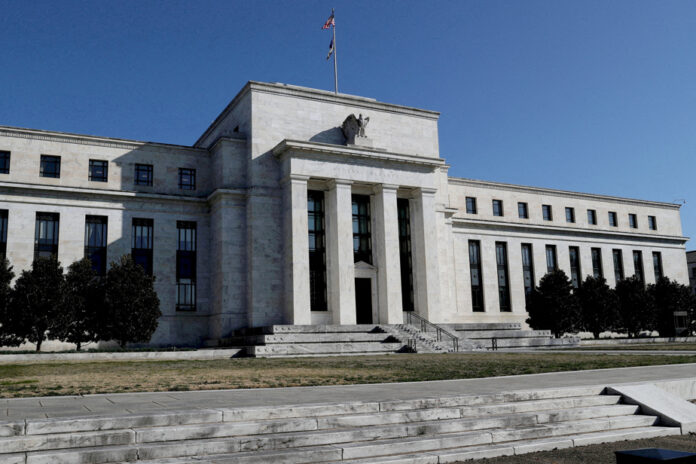(Washington) The American central bank (Fed) announced on Wednesday a pause in its rate hikes, for the first time since March 2022 and after ten hikes in a row, in order to take the time to observe the evolution of the economy.
The Fed’s Monetary Policy Committee (FOMC), meeting since Tuesday morning, unanimously decided to keep the main key rate in the range of 5.00-5.25%.
This pause should allow “to assess the additional information and its implications for monetary policy”, detailed the Fed in a press release.
“It gives the economy a bit more time to adjust while we make our next decisions,” Fed Chairman Jerome Powell said at a press conference.
Nevertheless, the institution’s officials mostly plan to raise rates further by the end of 2023, up to 5.50-5.75%. One of them even sees them go up to 6.00-6.25%. However, two members of the committee expect rates to remain at this level.
This prospect sent the New York Stock Exchange plunging, turning red after the release of the Fed’s statement.
“Almost all participants see it as likely that further rate hikes will be needed this year to bring inflation down to 2%,” said Jerome Powell, referring however to “a moderate pace”.
Most Fed officials then see rates come down to 4.25-4.50% in 2024.
The FOMC has also very slightly lowered its inflation forecast this year in the United States, to 3.2% against 3.3%, but has, on the other hand, raised its forecast for growth of the domestic product to 1.00%. gross (GDP) for 2023, against 0.4% expected in March.
Debates among Fed officials had begun on Tuesday morning, two hours after the release of the latest US inflation figures, which showed that consumer price inflation had slowed sharply in May, to 4.0% on one year against another 4.9% the previous month, according to the CPI index, the lowest level since March 2021.
Inflation is now half as high in the United States as in June 2022, when the peak of 9.1% was reached.
However, this remains well above the 2.0% targeted by the Fed, in the maneuver to extinguish this surge in prices, but the institution is beginning to glimpse its objective.
After ten increases in a row, by a total of five percentage points, several of its officials were in favor of this break.
This would “allow us to observe more data before making decisions on the magnitude” of the increases still necessary, explained in particular Philip Jefferson, one of the governors of the Fed, and soon vice-president if the Senate confirms his appointment. .
In addition, this break should make it possible to avoid weighing too much on consumption and investment, and therefore on economic activity, and, above all, to avoid a recession.
If the last CPI index appeared on Tuesday, the Fed favors another measure of inflation, the PCE index, whose data for May will be published at the end of June and which had started to rise again in April, to 4, 4% over one year.
The labor market remains tight, with labor shortages persisting, although the situation is improving. Job creations in May were much higher than expected, but the unemployment rate rose more than expected, to 3.7%. Weekly jobless claims were in early June at their highest since October 2021.















